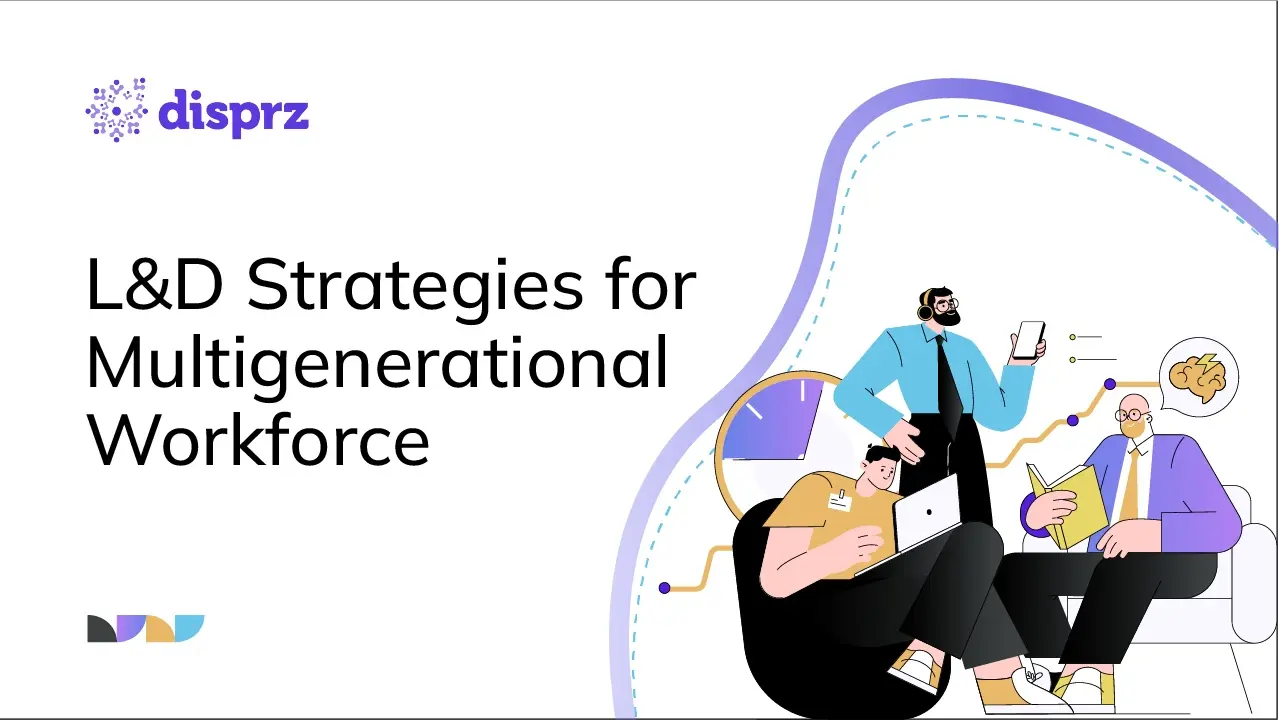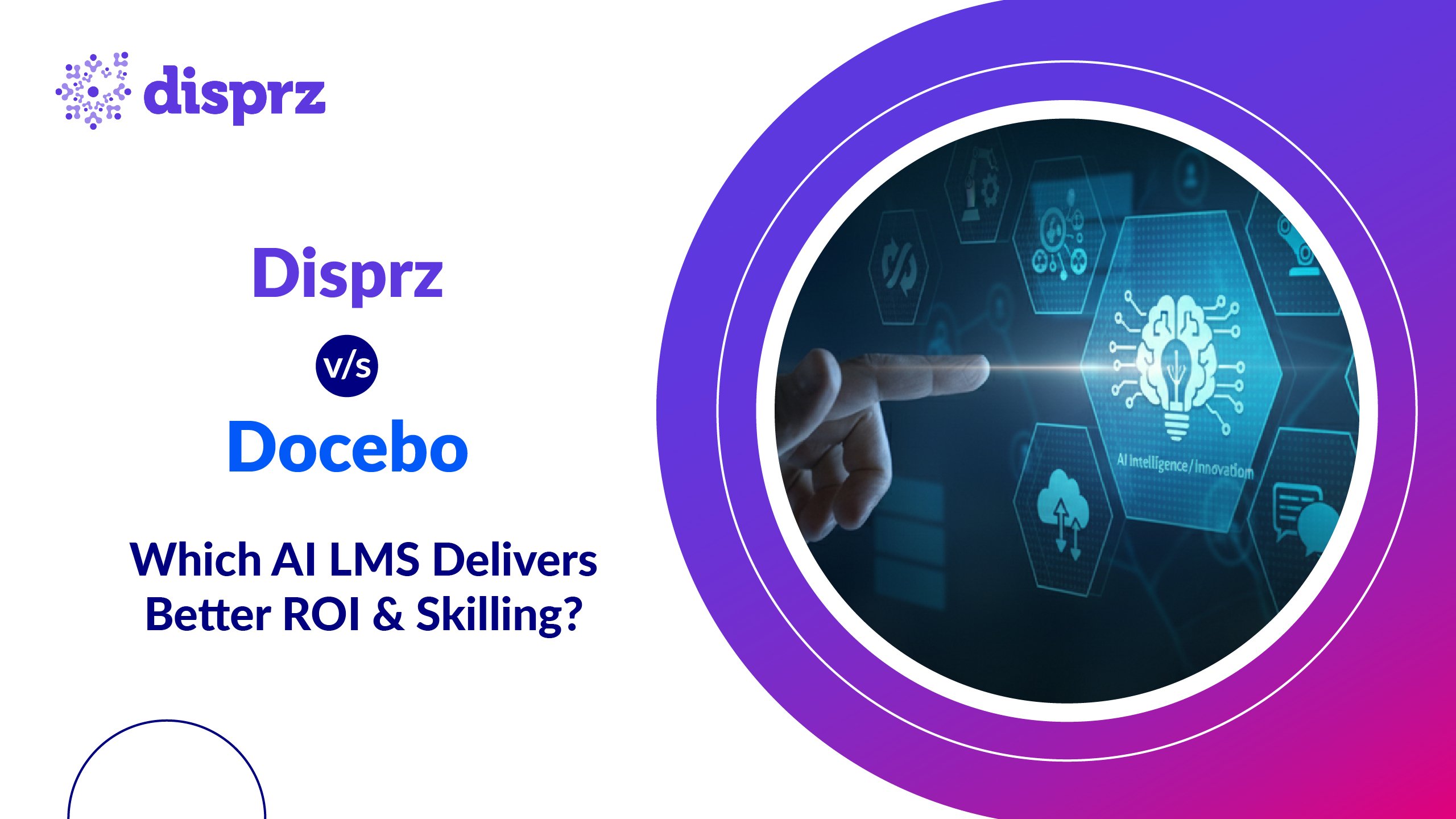Introduction: Embracing the Multigenerational Workforce
Today's workforce is more diverse than ever, with up to five generations collaborating side by side. This rich mix of experience offers organizations a powerful opportunity to leverage diverse perspectives, foster cross-generational mentorship, and enhance problem-solving capabilities.
By 2025, millennials alone are projected to make up 75% of the workforce, underscoring the importance of embracing a multigenerational team. However, with this diversity comes the challenge of addressing the distinct needs and preferences of each age group. This white paper provides a strategic roadmap to navigate these complexities, offering actionable strategies for effectively training and skilling a multigenerational workforce.
Why L&D Leaders Must Prioritize Multigenerational Learning
L&D leaders must prioritize multigenerational learning to ensure the long-term success of their organizations in an evolving workforce. As highlighted by LinkedIn’s 2023 Workforce Learning Report, skill sets needed for jobs have changed by 25% since 2015 and are expected to double by 2027. This rapid change demands a personalized approach to learning and skilling, as different generations ranging from Traditionalists to Gen Z have distinct work traits, learning preferences, and motivational factors. An effective L&D guide for managing generational diversity is essential in addressing these varying needs.
For example, Traditionalists and Baby Boomers prefer structured, instructor-led training, while Millennials and Gen Z thrive on digital, on-demand, and gamified learning experiences. Notably, 64% of Millennials prioritize organizations that offer learning opportunities, and 41% of Gen Z consider skill development a key factor in their job retention. These statistics underscore the importance of catering to diverse generational needs in learning programs.
By acknowledging generational differences and leveraging tailored learning strategies, L&D leaders can create inclusive environments that foster continuous upskilling and reskilling, ensuring their workforce remains agile, innovative, and engaged across all age groups.
Enhance Learning for Multigenerational Teams
To enhance learning for multigenerational teams, L&D leaders can leverage Disprz, a comprehensive learning and skilling platform designed to meet the diverse needs of today’s workforce. Disprz offers personalized learning experiences, helping organizations foster continuous skill development across generations. Here's an overview of the platform and key features that can support a multigenerational learning approach:
Platform Overview
Disprz is an AI-powered learning and skilling suite that helps organizations enhance workforce capabilities through personalized learning journeys. It integrates various content formats and delivery methods to accommodate the diverse learning preferences of different generations. By offering a centralized platform, Disprz helps unify training efforts, enabling seamless learning experiences for employees across all age groups.
Key Features for Multigenerational Teams
Personalized Learning Paths
Disprz tailors learning journeys to meet the specific needs of each employee based on their role, skills, and career goals. For multigenerational teams, this feature ensures that each generation receives training content that resonates with their learning preferences be it instructor-led, digital, or blended learning.
AI-Powered Content Recommendations
Using AI algorithms, Disprz suggests relevant learning content to employees, helping them bridge skill gaps more effectively. This personalization is crucial for engaging employees of different generations, who may have varying levels of technological proficiency and learning interests.
Blended Learning Formats
Disprz supports a combination of digital and traditional learning methods, allowing organizations to deliver content via multiple channels like e-learning modules, video tutorials, webinars, and classroom sessions. This flexibility helps cater to Traditionalists who prefer instructor-led learning and Gen Z employees who prefer interactive and on-demand resources.
Mobile Learning
The platform’s mobile-friendly design allows learners to access training materials on the go, which is especially important for tech-savvy Millennials and Gen Z, who prefer learning through mobile devices.
Skill Analytics and Feedback Loops
Disprz provides in-depth analytics to track learning progress and outcomes. By gathering real-time feedback from employees across generations, organizations can analyze engagement levels and identify generational patterns in learning preferences. This helps L&D teams make informed decisions and adapt programs to meet the unique needs of each age group.
Continuous Learning and Upskilling
With features like gamification, bite-sized learning modules, and social learning capabilities, Disprz encourages a culture of continuous learning. This is vital for keeping younger generations like Millennials and Gen Z engaged, while also providing opportunities for older employees to upskill at their own pace.
Implementing Personalized Learning Strategies for Multigenerational Teams
To effectively implement personalized learning strategies for multigenerational teams, organizations must focus on a seamless integration process and adhere to best practices that cater to the diverse needs of each generation. Corporate training for diverse generations plays a pivotal role in ensuring that every employee's learning style is accommodated. Here’s a step-by-step guide on how to deploy these strategies using platforms like Disprz.
Integration Steps
Assess Generational Learning Preferences
Conduct assessments through surveys and focus groups to understand the preferred learning methods of each generation. Gather data on their existing skill levels and areas needing improvement. This ensures that the learning program addresses diverse needs and aligns with individual preferences.
Map Learning Paths Based on Roles and Generations
Develop personalized learning paths tailored to specific roles and generational traits. Use data to create targeted learning journeys that align with both current job requirements and future career aspirations. This approach enhances engagement and relevance for all employees.
Leverage AI for Content Personalization
Utilize AI-driven tools to deliver customized content recommendations based on learners’ past interactions and skill gaps. This ensures that each employee receives relevant materials that match their learning style and career goals, improving overall effectiveness.
Deploy Blended Learning Formats
Implement a mix of digital and traditional learning formats to cater to various generational preferences. Offer options like e-learning, webinars, and classroom training, allowing employees to choose the method that best fits their needs and schedules.
Monitor Progress with Skill Analytics
Use analytics tools to track progress and measure learning outcomes across different generations. Analyze data on engagement and skill acquisition to make informed adjustments to the learning program, ensuring it remains effective and relevant.
Best Practices for Multigenerational Teams
Incorporate Feedback Loops
Regularly gather feedback from employees across generations to identify areas of improvement in learning programs. This feedback can help adjust the content, format, or delivery to better suit individual and generational preferences.
Foster Mentorship and Cross-Generational Learning
Implement mentorship programs where older employees can share their expertise while younger employees help senior colleagues navigate digital tools. This peer learning fosters collaboration and bridges generational gaps in skills and knowledge.
Enable Flexibility and Autonomy
Give learners the autonomy to choose their preferred learning format and pace. For example, allow employees to decide between attending live training sessions or completing digital modules at their own pace, depending on their work-life balance needs.
Promote Continuous Learning Culture
Encourage a mindset of lifelong learning by offering opportunities for continuous upskilling. This is particularly important for tech-savvy Millennials and Gen Z, who thrive in environments that prioritize growth and development.
Ensure Accessibility and Inclusivity
Make learning accessible to all employees, regardless of their generation or technological proficiency. Provide tech support for employees who may struggle with digital tools and ensure that all learning content is available in multiple formats (videos, articles, podcasts, etc.).
Adapt to Changing Needs
Stay agile in adapting the learning program to evolving business needs and generational shifts. Regularly update content and learning strategies to reflect new technologies, market trends, and employee feedback.
Conclusion
Empowering and managing a multigenerational workforce is crucial for achieving organizational success and fostering innovation. By tailoring learning solutions to address the unique needs of each generation, companies can create a more inclusive and effective environment. Personalized training and continuous feedback are key to bridging generational gaps and enhancing performance across the board.
Embracing these practices ensures that all employees can thrive and contribute meaningfully. To explore actionable insights and strategies for empowering every generation, download our comprehensive purple paper on a guide to empowering a multigenerational workforce through learning & skilling.








